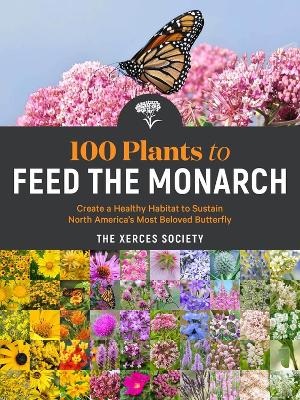Reviewed by annieb123 on
100 Plants to Feed the Monarch is an accessible practical *usable* guide to steps home gardeners can take to protect and enhance habitat for butterflies and other pollinators (specifically the monarch butterfly, but there's lots of practical info here for other species). Due out 13th April 2021 from Storey, it's 288 pages and will be available in paperback and ebook formats.
Written and presented by the Xerces Society, this is a really well written guide which contains concrete practical steps to help protect and enhance habitat for butterflies. The introductory chapters contain a good layman-accessible explanation of the monarch's life cycle and why habitat is shrinking and populations are being lost as well as a good guide to designing, improving, and expanding monarch-friendly habitat.
The second section of the book contains the plant profiles. One main chapter covers milkweeds (obviously very important - it's their main food source), as well as secondary sections detailing other important habitat plants grouped thematically: non-milkweed host plants, nectar plants, and nectar producing trees, vines, and shrubs. Each of the 100 plant family profiles includes color photographs, genus/group names, descriptions, culture requirements (light, soil, blooming season), recommended species, growing range map, and other invertebrate species for whom the plant(s) are important in terms of food or habitat.
This is a very well put together, graphically appealing, useful guide. Xeriscaping and using more native plants in garden designs have gotten more attention lately and over the last few years of incorporating more wildflowers in my own home garden beds I've been amazed how many more butterflies and native pollinators I've seen. It's also been rewarding from a time-saving standpoint because the native plants and wildflowers I've invited into my garden are perfectly adapted to life in the area as well as providing an important ecological bonus in the form of food or shelter for local wildlife.
Five stars. This would be a superlative selection for public or school library acquisition, home library, gifting to a gardening friend, for gardening groups/allotments/community gardens, or maker's groups. Really nicely done.
Disclosure: I received an ARC at no cost from the author/publisher for review purposes.
Reading updates
- Started reading
- 25 March, 2021: Finished reading
- 25 March, 2021: Reviewed
